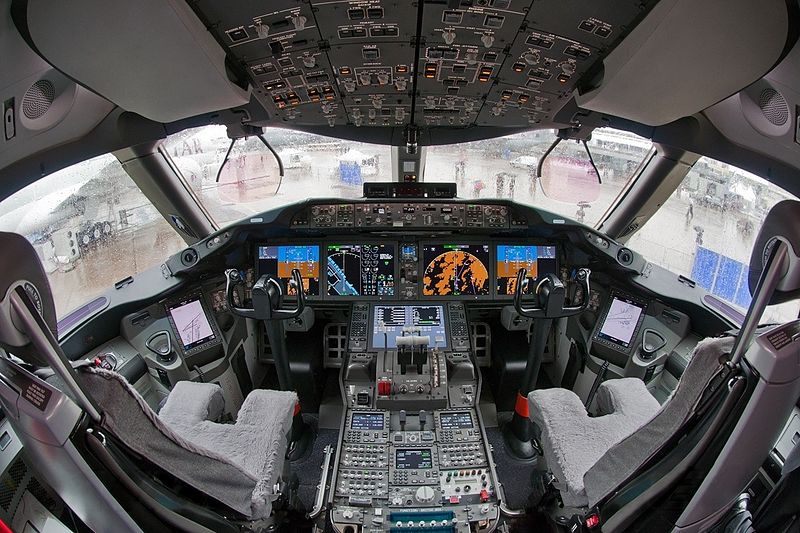By YURI KAGEYAMA, AP Business Writer
TOKYO (AP) — Boeing said Friday it sees commercial flights of its grounded 787 jets resuming “within weeks” even though it has not pinpointed the cause of battery overheating.
Boeing Co. Chief Project Engineer Michael Sinnett outlined a fix centered on a new design for the lithium-ion battery system that has layers of safeguards to prevent overheating and measures to contain malfunctions.
“We could be back up and going in weeks and not months,” Sinnett told reporters at a Tokyo hotel. A third of safety tests have already been completed. A Japanese official said it was possible flights could resume next month.
The 787 fleet was grounded worldwide by the U.S. Federal Aviation Administration, its counterparts in Japan and other nations in January, following a battery fire in a Dreamliner parked in Boston and an overheated battery that led to an emergency landing of another 787 in Japan.
All Nippon Airways, a major Japanese carrier, was the launch customer for the technologically advanced Dreamliner planes. With Japan Airlines another customer, about half the 787 jets in use are with Japanese carriers.
The Boeing executives sought to allay flier fears about the 787 by repeatedly stressing their commitment to safety. The Dreamliner is the first airliner to make wide use of lithium-ion batteries. They are light and quick to charge but can suffer from “thermal runaway,” a chemical reaction in which a rise in temperature causes a spiral of temperature increases.
The executives said it would take too long to figure out what had specifically caused the problems in Boston and southwestern Japan but the new design would ensure 787s are safe.
Boeing came up with 80 possible causes for the battery failures, categorized them into four groups, and came up with design changes such as better insulation between each battery cell so any malfunctions won’t spread. That was to allow the 787 to be back in the air more promptly, they said.
There were also changes to wiring for the battery, aimed at preventing overheating, and a new enclosure for the battery that they said would eliminate fire risk.
The enclosure has a direct vent to carry battery vapors outside the airplane, and small holes at the bottom of the battery case will allow moisture to drain from the battery, according to Boeing. The battery charger is also being adapted to beef up safety, it said.
While executives acknowledged that final approval would have to come from the FAA, and didn’t rule out further delays to ensure safety, they said they were in close contact with the FAA and didn’t foresee any long delays.
“It’s a safe airplane. We have no concerns at all about that,” Sinnett said.
Boeing Executive Vice President Ray Conner offered his apologies to Japan for the problems.
“We do apologize for this situation,” Conner said. He said he was in Japan to meet with aviation authorities and airlines, and the company had picked Japan as the place to outline the battery fix.
About a third of the plane is made by Japanese manufacturers, including GS Yuasa, which supplies the lithium-ion batteries.
Despite assurances from Boeing, it is unclear if travelers will have enough confidence in the 787 to book flights on them.
Aviation analyst Kotaro Toriumi said carriers will likely face some challenges wooing people back to the 787 especially because the cause of battery overheating has not been identified. But many won’t hesitate to do so once the FAA gives the go-ahead, he said.
“What the FAA decides will be critical,” he said. “Boeing can’t afford to have the jets staying idle forever.”
Both ANA and JAL have announced cancellations of hundreds of 787 flights through the end of May.
Still, once the FAA clears the jet, approval from Japanese aviation regulators is likely to be instant.
Transport Ministry official Yasuo Ishii said Japanese officials were part of the tests and certification in the U.S., and planned to go along with and be part of the FAA decision.
He said it was even possible commercial flights could resume as early as next month.
JAL spokesman Jian Yang said in a statement the airline sees the 787 tests going “to a new stage” and was ready to cooperate with others in the effort.
ANA also welcomed Boeing’s plan.
“As the launch customer for the 787, ANA hopes for a resumption of flights as soon as possible, while putting safety as a top priority,” it said.
Boeing executives played down fire risks, stressing that there was no fire in the Japan failure and that there was no major damage to the aircraft.
They said they would not hesitate to fly on the 787 or have their families fly on them.
They declined comment on questions about monetary compensations for the carriers, which are suffering losses because of flight cancellations.
___
Follow Yuri Kageyama on Twitter at twitter.com/yurikageyama
Copyright 2013 The Associated Press.










